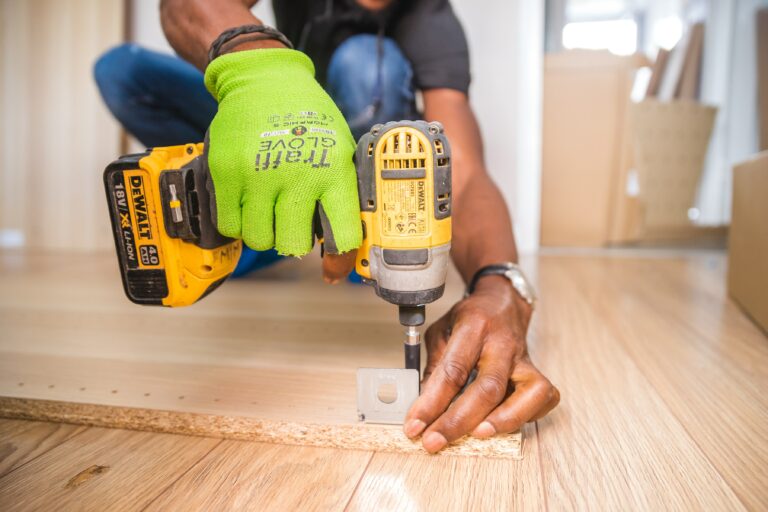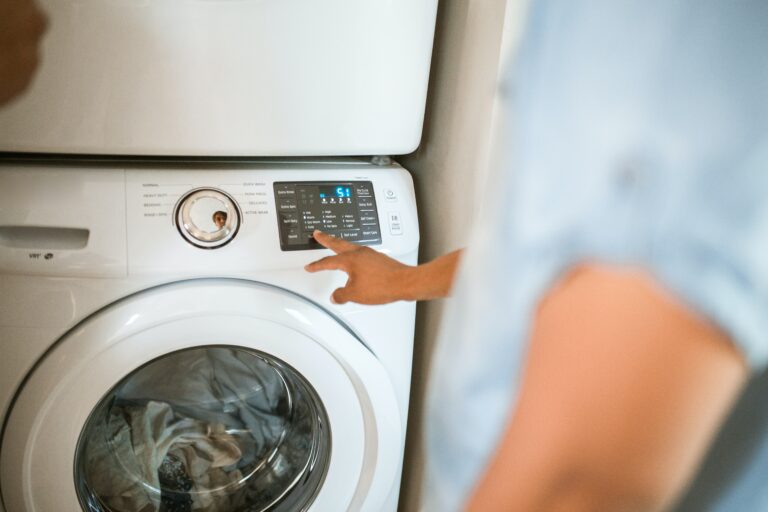Tips For Killing Moss On Your Patio
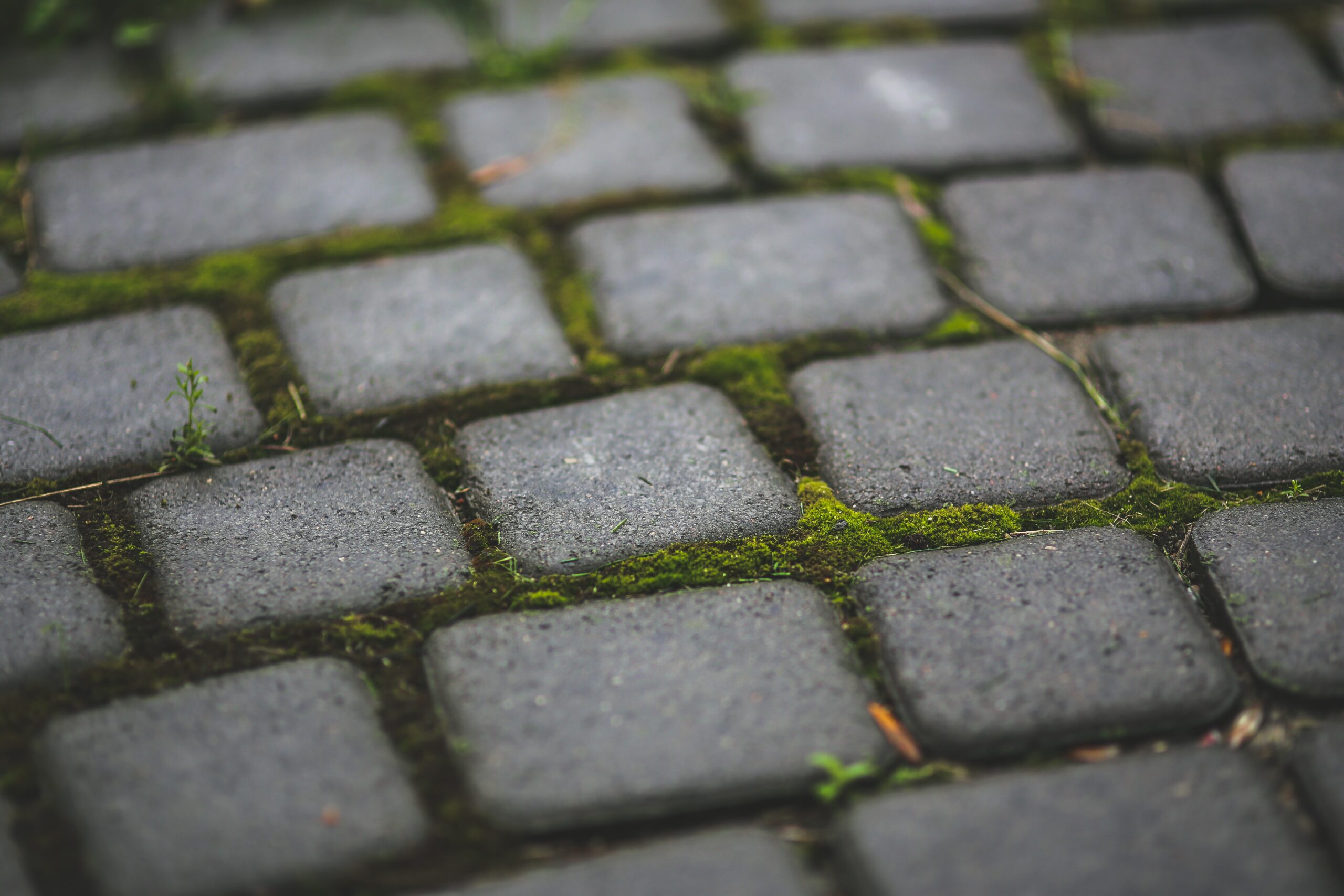
Introduction: Why Does Moss Grow In The First Place?
Moss is a common problem on patios. Moss can be a problem for any patio, but it is important to understand why it grows in order to prevent moss from growing back.
Moss usually forms when there is surface dirt and soil combined with general debris such as leaves finding their way into the joints and they begin to rot.
Moisture builds up and forms the perfect environment for mosses, liverworts, hornworts and algae to grow. Their rhizoids (small roots) then latch onto the hard stone and grow. If left alone for too long they can be very difficult to get rid of.
Alkaline levels combined with surface water and poor filtration also contribute to growth. The best way to prevent moss from growing back is to keep the surface clean of leaves, debris and soil and make sure water isn’t stagnating on the top of the surface.
6 Methods To Killing Moss On Your Patio
Moss is an issue that can be seen on many different surfaces and it can be a pain to remove. Here are 6 alternative ways to killing moss on patio, block paving and other stone or hard surfaces with effective results.
If you are unsure whether some of these methods may cause discolouration or damage to delicate surfaces, test on a smaller area, first.
1) Use a stiff broom or wire brush to get into thicker growth areas to remove the moss. Block paving will often have thicker clusters of moss due to the deeper joints combined with grit, joint sand and pooling water.
2) Use a pressure washer: Pressure washers are powerful enough to blast away dirt and moss from the surface and are generally the most effective way of lifting moss away from block paving and stone.
Make sure that you don’t use too much pressure so you don’t damage the surface of your patio. If you don’t have one then it’s worth investing in one as they’ll make the job much easier.
3) Use bleach: Mix one gallon of water with one cup of bleach in a container and then apply it with a spray bottle, and scrub away at the affected area.
Make sure that you wear gloves when using this method because bleach can irritate your skin, especially if it gets into any cuts or scrapes on your hands.
4) Use vinegar: Vinegar is an all-natural way to remove moss without doing any damage to the surface underneath. Simply pour white vinegar onto the affected area until it’s soaked through the moss.
Do make sure not to pour it directly onto the concrete, and take care to avoid spilling any of the vinegar on other materials.
Let it soak for a few hours before rinsing away with water (this can be done overnight). Jet washing the surface afterwards is a good idea as this will only kill the moss, not remove it.
5) Baking soda: It can be used as a substitute for liquid detergent when prepping your surfaces in order to remove moss.
Simply mix one part baking soda with four parts water and spray onto the surface, making sure there is enough water to dilute the soda mixture. Let it sit for ten minutes and then scrub it with a stiff brush.
For added strength, you can add vinegar to the mixture which will trigger oxidisation and aggressive fizzing to help break up the moss.
6) Moss killer: A dedicated spray can also be one of the best ways to kill moss, but you will find you still need to remove the excess with a power washer as the chemicals take a couple of days to get to work and kill it off.
A general-purpose industrial-strength weed killer is very good at standing up to the job, also.
Tools And Accessories For Moss Removal
Trying to get rid of moss single-handedly won’t get you anywhere so here are some simple, cost-effective tools and accessories you may need for tackling your moss problem.

Wire Brush
A wire brush is very effective for removing thick moss which is advisable before using a pressure washer which will only cause more mess to clean up.
The rhizoids are the anchored components, and therefore it is important that you use an effective tool to remove them effectively and efficiently. Some wire brushes have scrapers attached which come in handy (especially for block paving).
A wire brush is strong enough and constructed for jobs like this. The cables have a bit of flex and will make clearing up cracks on sidewalks and harder-to-reach places, easier.
If the surface is porous and chalky you will find a wire brush is too aggressive. Evaluate your surface and trial on a smaller, out-of-sight area, first.
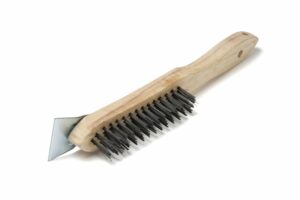
Weed Killer
Industrial strength weed killer is readily available and regularly on offer from high street retailers such as B&Q, Wickes, and The Range or online via eBay or other leading marketplaces.
Make sure you read the instructions for the best results. Avoid surrounding plants and grass areas as you’ll end up killing them.
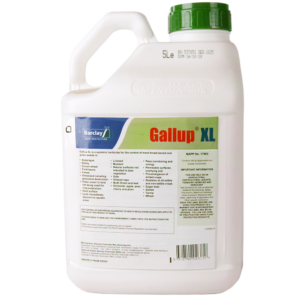
Spray Bottle
There are several ways to combine chemicals in a liquid. Hand-held spray bottles are useful for the distribution of the weed killer solution or a diluted mixture of choice.
If you’re using a commercial-strength weed killer, make sure you avoid contact with other plants to avoid killing them.
Check the instructions on the correct dilute ratios and mix accordingly depending on the capacity of the container.
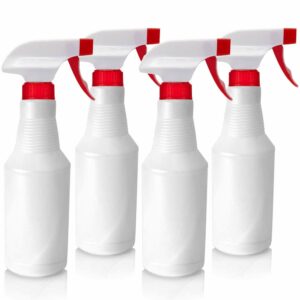
Power Washer/Jet Washer
Power washers are the ultimate removal tools. Not only useful for moss removal but also ideal for other types of cleaning. If you don’t have one they are worth investing in as they are relatively inexpensive to buy and are regularly on offer.
Furthermore, leading brands such as Karcher, Nilfisk and Bosch will last for years if they are maintained properly.
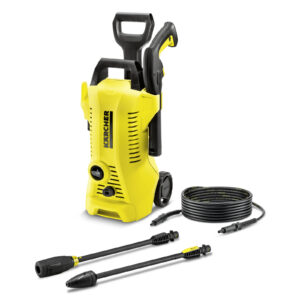
Boiling Water
Boiling water is more of a supporting method to clear any remaining moss and grime after jet washing and treating the pavers.
Simply pouring it on and hoping it’ll remove the moss and prevent moss growth on its own simply won’t work no matter what you read. It may stunt growth but it will begin to grow back.
It’s useful to have a kettle boiled and ready to pour on your driveway, paving or other surfaces as a final rinse which will help disperse any remaining grit and break down any leftover soil.
You can always pour boiling water onto the moss before removing the excess with a stiff broom as it can help soften it in colder periods.
Rubber Gloves And Safety Glasses
Chemical mixtures are potentially deadly. Having rubber gloves and safety glasses/goggles is always the best practice for ensuring your safety and protecting your skin and eyes from chemicals which can cause irritation.
It may seem like an accident-free process but the last thing you want is to end up in the hospital because you skipped the basic PPE requirements. Jet washers will also result in the projection of stones and grit so don’t skip the safety measures.
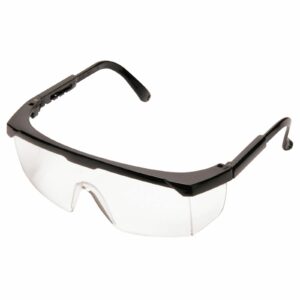
Knee Pads
You may have to kneel down on hard surfaces so it’s always a good idea to purchase a robust set of knee pads or alternatively a kneeling mat.
However, knee pads are much more versatile when you are moving around a lot so we recommend these over a mat which you’ll have to keep picking up and moving around.
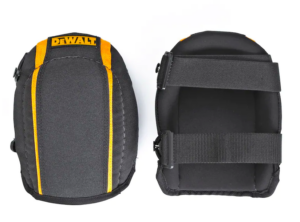
Garden Hoses
Using a garden hose isn’t going to be as powerful as a jet washer but it might be sufficient for lighter work. Either way, it will come in handy for rising and routine maintenance clearing out loose spores.
You will need a connection from your outside tap for jet washing anyway so all households with a sizeable garden should have one. Hozelock is a good brand with heavy-duty piping to avoid splitting.
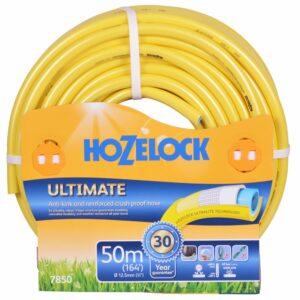
Keeping Your Patio Dry
Although this may sound impossible in the UK, removing surface water and reducing the amount of moisture sitting on the block paving, paving slabs or other stone surfaces is the best way to prevent moss from growing back.
If you notice water building up, leaves and surface dirt it’s advisable to sweep it away before it has the chance to thrive. Summer months aren’t as prone to moss growth as moss struggles to grow in direct sunlight and heat.
You can always treat the surface with weed killer in a sprayer at the end of summer which will help prevent growth during the wetter, colder months.
Routine Maintenance Tips
- Keep the area clean – regular sweeping goes a long way
- Clear surface water regularly – check if there’s an underlying drainage issue too
- Purchase the right equipment – the right equipment makes the job much easier
- Wear PPE when carrying out heavy-duty cleaning – safety should always be a priority
- Expose areas to sunlight if possible – move unwanted bushes or objects
- Spray weed killer at the end of summer on the surface – a quick spray helps fight growth
Conclusion
Trailing some of these solutions will help you on your way to achieving a moss-free patio or driveway in no time. Every surface is different and depending on where you live, you will be subject to different levels of rainfall and therefore increased chances of moss population.
Getting rid is the first step if you already have a problem, but maintenance scheduling and general cleanliness while reducing moisture levels is the best way to prevent moss from growing in the first place.
If you feel your moss is too excessive and unmanageable, contact a professional to carry out the work instead.

